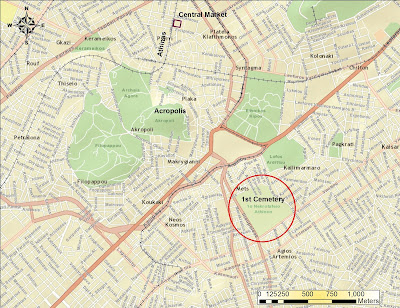Long-time readers may remember that when I explored historical
Patan in Kathmandu, Nepal, I noted how old apartment buildings were clustered around a central square or patio, in which there was a well. In the era before municipal water supply, not only was the well essential to provide water for the residents, but it was probably the center of social life, a place for gossip, and a way to keep check on who was coming and going. Venice had a similar culture.
In Venice, the paved area in the middle of a cluster of houses was known as a
campo. Venice has only one square, and that is the Piazzo San Marco, the monumental gathering place before the St. Mark's Basilica, the Clock Tower (Torre dell'Orologio), and the Procuratie Vecchie. So a piazzo was a major decorative and political feature, while more modest campos were found throughout the islands and neighborhoods. And most campos were equipped with a cistern to trap and save rainwater. The cistern consisted of a brick-lined chamber filled with sand. Rain water filtered down through the sand to maintain purity.
 |
| Campo Realto Novo, Venice |
Here is the top or head of the cistern in the Campo Realto Novo, near the Realto bridge. Look at the magnificent pink marble - one huge carved piece topped with old wrought iron grillwork. At one time, some of the paving tiles on the ground would have been perforated to allow rainwater to enter the sand pit below. Years ago, the residents of the surrounding houses elected a well marshal to keep the paving blocks and the general area clean. While washing, the perforations were sealed to prevent dirty water from entering the cistern. Fouling the water was punishable with death. (Hmmm, why isn't fouling our waterways today punishable in a similar manner?) In this campo, a tap with running municipal water was added much later (see the foreground).
 |
| Calle del Teatro, Venice. |
Here is the cistern in the Calle del Teatro, near the site of Marco Polo's house. The house is gone, but tour guides take you there to show you where it was supposed to be. This cistern has has a decorated iron spigot. The paving blocks are newer and the perforated ones are gone or covered up.
Here are two more cistern heads, again carved from single pieces of marble. Imagine the skill hundreds of years ago to quarry this stone, drag it out of the mountains, carve it, and bring it to Venice by wagon and barge. It is similar to the enterprise displayed by the ancient Egyptians, who quarried rock and brought it down the Nile by barge.
 |
| Campo-Sant'Angelo, Venice. |
This cistern is in the Campo-Sant'Angelo. This example was made from several marble pieces.
 |
| Palazzo Cavalli-Franchetti, Venice. |
This unit with spectacular carving and ironwork is in front of Palazzo Cavalli-Franchetti, whose other side fronts the Grand Canal. I suppose if you were wealthy and owned a palazzo, you also could afford an elegant cistern.
Let's cross the Grand Canal on the Ponte de l'Academia, which is next to the Palazzo Cavalli-Franchetti. This is the view to the east, with the dome of Santa Maria della Salute at the skyline. Truly, there is no other place else on earth with such an astonishing architectural heritage in such a small area (well, possibly one exception: the temples at Angor in Cambodia). Also, consider the skill of the medieval architects, who knew how to build a foundation in soft, muddy deltaic sediment that could support a monumental stone church weighing thousands of tonnes.
 |
| Campo S.Vio, Venice. |
The neighborhoods south of the Grand Canal also needed cisterns. This example is at Campo S.Vio, by the Palazzo Barbarigo. I could not tell if this was a single piece of marble or multi-piece.
 |
| Calle del'Abazia, Venice. |
As our final example, here is a monumental single carved piece at Calle del'Abazia, by the church of San Gregorio. Again, you can see that the paving stones are new, and the old perforated ones are covered.
 |
| Giudecca canal, Venice. |
Finally, from the ancient to the ultra-modern: this is the Giudecca canal, the main deep-draft navigation channel for ferry boats and cruise ships transiting from the Port of Venice through the Laguna Veneta, past the Lido, and on to destinations throughout the Adriatic and Mediterranean. This is a serious passenger port, and some weekends see up to 40,000 tourists invading the fragile city. They overwhelm the local stores, restaurants, and toilets. The smell of money, but possibly the seeds of destruction?
This is a 1958 post card from the Giudecca Canal in front of San Marco square. The label on the card states, "Paquebot SAN MARCO, Societe de Navigation, Venise." My parents sent this card to a relative.
For more information on Venetian cisterns, see these volumes on architecture:
McGregor, J. H. S. 2006.
Venice from the Ground Up. Belknap Press of Harvard University Press, Cambridge, MA, 384 p.
Howard, D., and Moretti, L. 2002.
The Architectural History of Venice. Yale University Press, New Haven, CT, 384 p.
Venipedia has a description of the cisterns:
http://www.venipedia.org/wiki/index.php?title=Wellhead , accessed September 20, 2013.
Photographs taken with a Nexus 4 phone (sorry, no real camera this trip).














